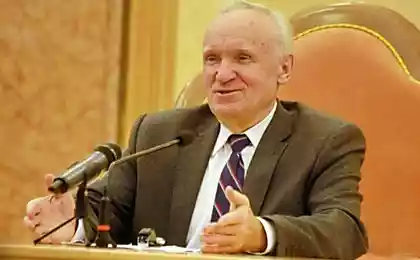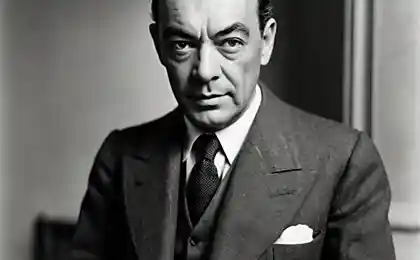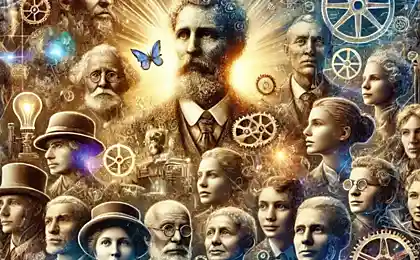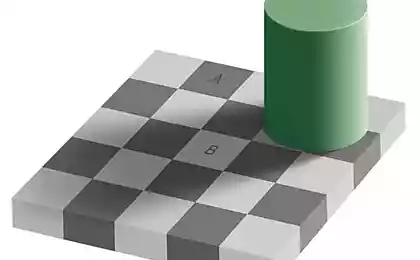221
Nihilism of the goal: where does the road to nowhere begin?
Everyone has the right to live without special goals, and the main thing is not to equate action with observation.

“Man is condemned to be free.” – Jean-Paul Sartre But what if that freedom includes the right to no global purpose?
In the era of total optimization and the cult of productivity, when each step must lead to a predetermined goal, a strange and at the same time liberating phenomenon appears - the nihilism of the goal. This is not about the destruction of everything and everything, but about a deep rethinking of the very nature of goal-setting in human life.
The Anatomy of Purposelessness: When No Plan Becomes a Plan
Imagine an artist walking up to a canvas every morning with no idea what he was going to paint. His brush moves intuitively, creating shapes and colors that are born in the process of creativity. The result may turn out to be a work of genius or a complete abstraction, and that is the essence of the nihilism of purpose.
It's important to understand: The nihilism of the goal does not mean complete passivity or idleness. This is a conscious choice in favor of the process over the result, the path over the destination.
Modern psychology is increasingly turning to the concept of “flow state” – moments when a person is completely immersed in activities, forgetting about time and external goals. The paradox is that it is in these moments that we often achieve the most impressive results.
The phenomenon of spontaneous action

Neurobiological research shows that our brains constantly generate ideas and impulses to act, most of which we suppress in favor of rational planning. The nihilism of purpose suggests a different approach: trust these natural impulses and see where they lead.
History knows many examples of great discoveries made by chance. Alexander Fleming discovered penicillin by forgetting to close a petri dish. Georges de Mestral invented Velcro by studying burdock stuck to his clothes while walking. These discoveries became possible due to the absence of rigid fixation on the originally set goals.
The Difference Between Action and Observation: The Key to Understanding
The main dilemma: Many people confuse the absence of global goals with complete passivity. This is a fundamental misunderstanding of the nature of goal nihilism. Observation and action are two completely different states of consciousness.
When we observe, we assume the position of an outside observer of our life. This state may be productive for reflection and analysis, but it should not become a permanent mode of existence. Action is active interaction with the world, even if it is not aimed at achieving a specific goal.
A practical example: The improviser doesn't know what notes he'll play in the next second, but he's actively making music. His actions are spontaneous, but they are actions, not passive observation of the sound of the instrument.
The psychology of active aimlessness
Research in positive psychology shows that people who practice “conscious aimlessness” often show higher rates of creative thinking and psychological well-being. Paradoxically, abandoning rigid goal-setting can lead to deeper life satisfaction.

The key difference is that a person who practices goal nihilism remains an active participant in his or her life. He can create, build relationships, learn something new, but he does it out of interest in the process, not for the sake of achieving a predetermined result.
How to live without global goals while remaining active
Active aimlessness strategies
The practice of blind choice: Once a week, let the occasion determine your actions. Open a random page of a book, take an unfamiliar route home, try a new hobby without exploring its prospects.
Technique of "process focus": Instead of asking, “What’s going to happen?” ask, “How do I feel doing this right now?” Focus on the quality of the experience, not its results.
Open door method: Create opportunities for unexpected turns regularly. Agree to offers that would normally be rejected, explore topics unrelated to your main activity.
The practice of "active drift": Set aside time for activities without a plan. This can be a walk without a route, free drawing, improvisation in any form – the main thing is that you remain active participants in the process.
Overcoming Social Pressure
One of the main difficulties in the practice of goal nihilism is the opposition to social expectations. Society constantly asks us to answer the questions “What do you want to become?”, “What do you want to achieve?”, “What are your five-year plans?”
Lifehack: Learn to formulate your position not as a rejection of goals, but as a choice in favor of flexibility and openness to new experiences. Instead of “I don’t have goals,” say “I’m exploring opportunities.”
It is important to remember that the right to aimlessness is as fundamental a right as the right to purpose. No one is obliged to live according to other people’s ideas about the “right” life.
Dangers and pitfalls: When aimlessness becomes destructive
Like any philosophical position, the nihilism of purpose can be distorted and turned into an excuse for passivity or irresponsibility. It is important to understand the limits of this approach.
Red flags: If the absence of goals leads to a complete cessation of any activity, neglect of obligations to other people or depression, this is a signal that the approach is being used incorrectly.
Healthy goal nihilism involves a high degree of awareness and responsibility. You may not have long-term plans, but you must remain a reliable partner, parent, and friend. Lack of personal ambition does not exempt from social obligations.
Balancing Freedom and Responsibility
The art of living without global goals is the ability to combine spontaneity with responsibility, freedom with concern for others. It requires constant inner work and honesty with yourself.
Practical advice: Keep a journal of observations of your states and actions. This will help distinguish productive aimlessness from destructive passivity. Ask yourself, “Am I avoiding actions or choosing them freely?”
Philosophical Roots and Modern Interpretations
The idea of living without predetermined goals is not new. The ancient Chinese philosophy of Tao speaks of "wuwei" - action without coercion, the natural course of life. Zen Buddhism emphasizes the importance of being present in the moment without fixating on results.
In the Western tradition, twentieth-century existentialists explored themes of absurdity and freedom of choice. Albert Camus wrote about the need to accept the absurdity of existence and find liberation in this acceptance. Contemporary goal nihilism develops these ideas, offering practical ways to translate them into everyday life.
“The path is created by walking” – this Spanish proverb perfectly reflects the essence of the philosophy of active aimlessness.
The nihilism of purpose is not a philosophy for everyone. For some people, rigid goal-setting brings joy and meaning. But for those who feel tired of continual planning and striving for results, this approach can be a source of liberation and creative inspiration.
Modern neuroscience confirms that our brains work most efficiently when they combine structured activity with periods of free exploration. The nihilism of purpose can be a tool for creating such a balance in life.
Glossary of terms
Nihilism of purpose
A philosophical approach that involves consciously abandoning rigid long-term goals in favor of spontaneous but active interaction with life.
Active aimlessness
A state in which a person remains active and engaged without having predetermined ultimate goals.
Flow state
Psychological state of complete immersion in activities characterized by loss of sense of time and high concentration.
Uway.
The concept of Taoist philosophy, meaning “not acting” or acting according to the natural course of things, without coercion or violence.
Existentialism
Philosophical direction, emphasizing the uniqueness of human existence, freedom of choice and responsibility for their actions.
Mindfulness
A state of active, open attention to the present moment, the ability to observe one’s thoughts and feelings without judgment.
Conclusion: The nihilism of purpose is not a call to idleness or irresponsibility. It is an invitation to a deeper understanding of the nature of human motivation and alternative ways of building meaningful lives. In a world obsessed with results and achievement, the right to aimlessness may prove to be the most precious gift to oneself.
Remember, life is not a problem to be solved, but a reality to be lived. And sometimes the best way to live it is to let it flow in its natural way while remaining an active participant in this amazing process.
How to Find a Man Among People: The Anatomy of True Intelligence
How to walk for the benefit of your psyche























